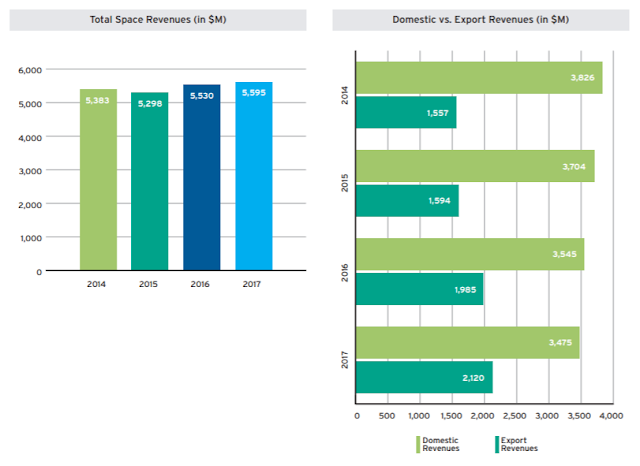By Brian Orlotti
Over the past week, several announcements from China have heralded a raising of the stakes in the current international resurgence of space exploration; the successful tests of both a hypersonic space plane and a reusable orbital rocket designed and built by Chinese launch startups and the China National Space Administration’s (CNSA) April 24th announcement of its plans to build a scientific research base on the Moon’s south polar region within the next ten years.
As outlined in the April 26th, 2019 Space News post, "Chinese firms Space Transportation and Linkspace test reusable launcher technologies," the Chinese based launch firm Space Transportation (a rough translation of its Chinese name: 凌空天行) carried out a test on April 22nd, 2019 in northwest China in cooperation with Xiamen University, launching a 3,700-kilogram reusable winged suborbital demonstrator named Jiageng-1 which reached a maximum altitude of 26.2 kilometers and a top speed of above 4,300 kilometers per hour.
As well, on April 24th, China’s Space Day, CNSA chief Zhang Kejian announced China’s intent to build a scientific research base in the Moon’s south polar region in about ten years. The announcement was made at the Space Day opening ceremony in Changsha, capital of China's Hunan Province. Kejian also discussed the Chang'e-5 lunar sample return mission to launch in late 2019 as well as China’s yet-to-be-named first Mars mission to launch in 2020.
China’s latest announcements and their effect on the policy of the US and other spacefaring nations remains to be seen. Earlier this year, limited cooperation between the CNSA and NASA during the Chang’e-4 lunar landing opened the door to possible Chinese/US collaboration in exploring and settling the moon. In the context of the current US/China trade war, such actions could be a ‘keep your friends close and your enemies closer’ strategy on the US’ part.
However, given the Western world’s current social and economic problems and the chaotic tendencies of the US’ Donald Trump administration, the boots on the lunar ground may, at least initially, be only those of the CNSA and SpaceX, Blue Origin, Moon Express and other private space firms. A Trump defeat in the 2020 US elections could signal yet another abrupt shift in policy.
The next few decades in space look to be anything but boring.
Over the past week, several announcements from China have heralded a raising of the stakes in the current international resurgence of space exploration; the successful tests of both a hypersonic space plane and a reusable orbital rocket designed and built by Chinese launch startups and the China National Space Administration’s (CNSA) April 24th announcement of its plans to build a scientific research base on the Moon’s south polar region within the next ten years.
As outlined in the April 26th, 2019 Space News post, "Chinese firms Space Transportation and Linkspace test reusable launcher technologies," the Chinese based launch firm Space Transportation (a rough translation of its Chinese name: 凌空天行) carried out a test on April 22nd, 2019 in northwest China in cooperation with Xiamen University, launching a 3,700-kilogram reusable winged suborbital demonstrator named Jiageng-1 which reached a maximum altitude of 26.2 kilometers and a top speed of above 4,300 kilometers per hour.
After the test, the rocket was recovered at a designated landing site. Space Transportation is funded through Chinese based venture capital firm Source Code Capital (源码资本).
The second test was a follow-up of an earlier, March 27th, 2019 low-altitude untethered launch and test landing. On April 19th, 2019, Chinese launch provider Linkspace launched its RLV-T5 tech demonstrator to a height of 40 meters (double that of the first test) and achieved a greater landing accuracy, according to the company.
According to the Space News post:
LinkSpace Aerospace Technology Group was founded in 2014 with the aim of developing a reusable launch vehicle capable of vertical takeoff and vertical landing since its founding in 2014. The company aims for a full test flight of the NewLine-1 orbital launcher in 2021, which will be capable of carrying 200 kilograms to a 500 kilometer sun-synchronous orbit (SSO).As outlined in the post, a large number of number of NewSpace focused companies have emerged in China "following a 2014 policy decision to open the launch and small satellite sectors to private capital. Approved firms have also received support through a civil-military integration national strategy, which facilitates the transfer of restricted technologies in order to promote innovation in dual-use technology and reduce costs."
As well, on April 24th, China’s Space Day, CNSA chief Zhang Kejian announced China’s intent to build a scientific research base in the Moon’s south polar region in about ten years. The announcement was made at the Space Day opening ceremony in Changsha, capital of China's Hunan Province. Kejian also discussed the Chang'e-5 lunar sample return mission to launch in late 2019 as well as China’s yet-to-be-named first Mars mission to launch in 2020.
China’s latest announcements and their effect on the policy of the US and other spacefaring nations remains to be seen. Earlier this year, limited cooperation between the CNSA and NASA during the Chang’e-4 lunar landing opened the door to possible Chinese/US collaboration in exploring and settling the moon. In the context of the current US/China trade war, such actions could be a ‘keep your friends close and your enemies closer’ strategy on the US’ part.
However, given the Western world’s current social and economic problems and the chaotic tendencies of the US’ Donald Trump administration, the boots on the lunar ground may, at least initially, be only those of the CNSA and SpaceX, Blue Origin, Moon Express and other private space firms. A Trump defeat in the 2020 US elections could signal yet another abrupt shift in policy.
The next few decades in space look to be anything but boring.
 |
| Brian Orlotti. |
______________________________________________________________
Brian Orlotti is a network operator at the Ontario Research and Innovation Optical Network (ORION), a not-for-profit network service provider to the education and research sectors.













